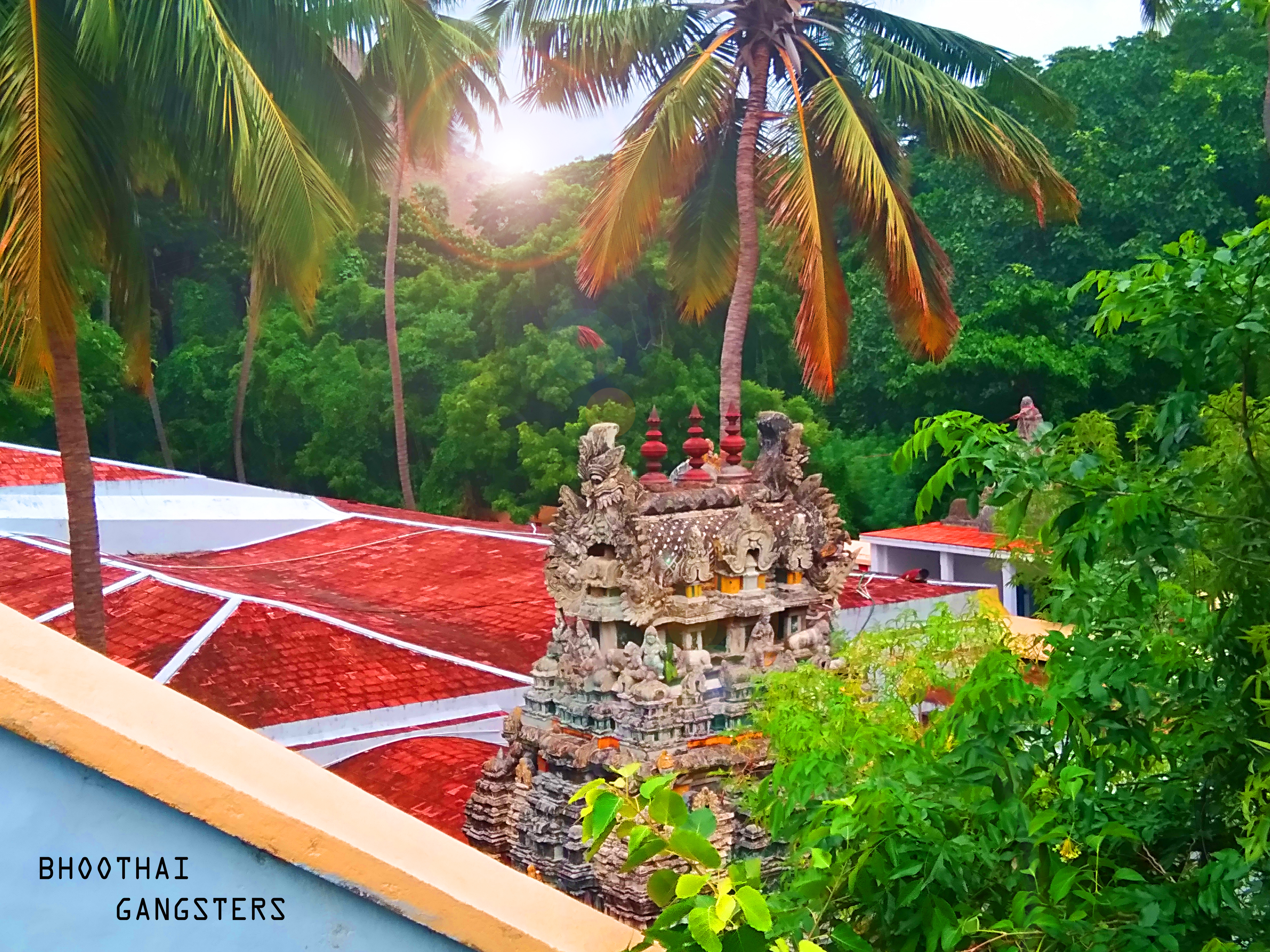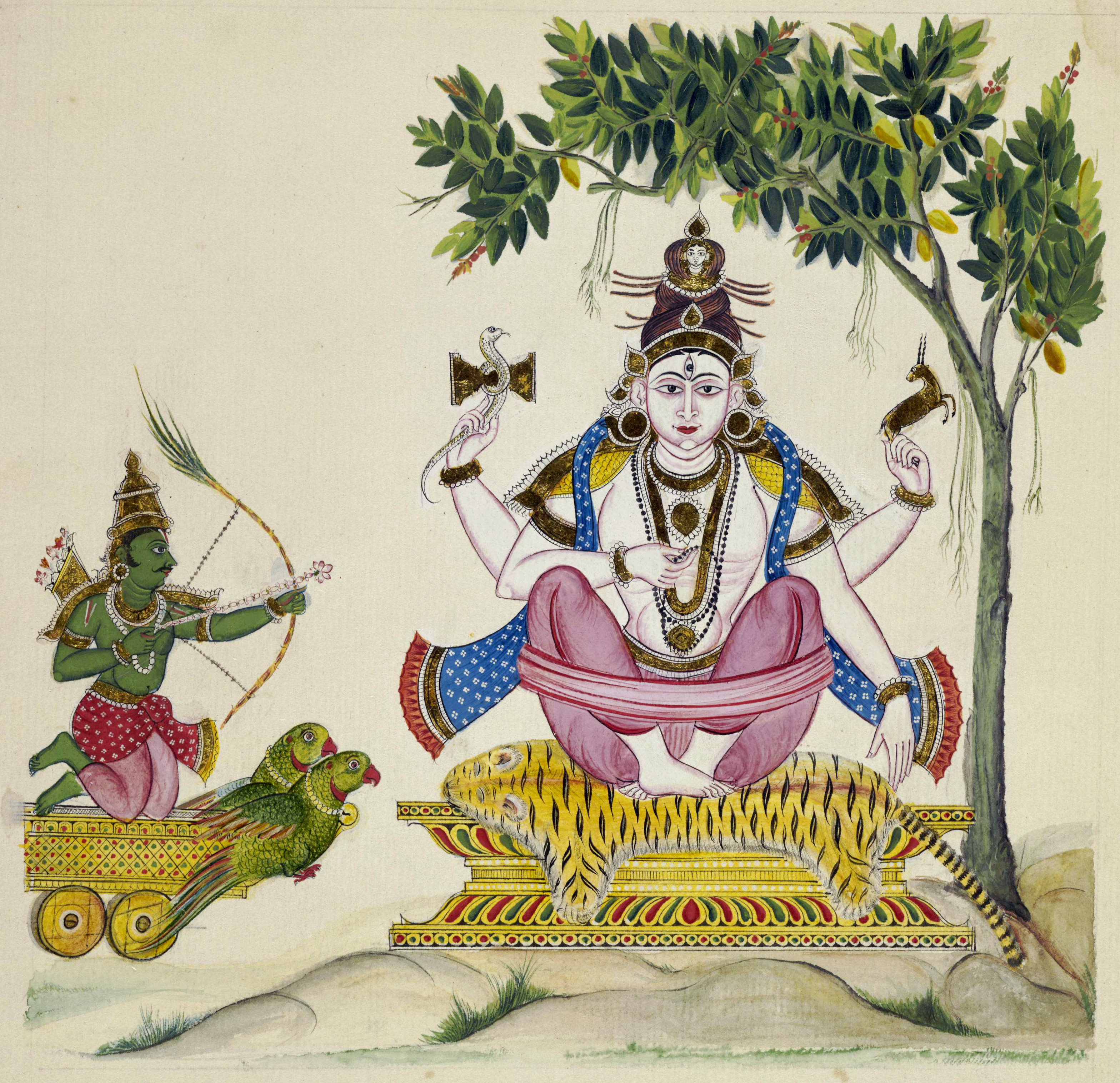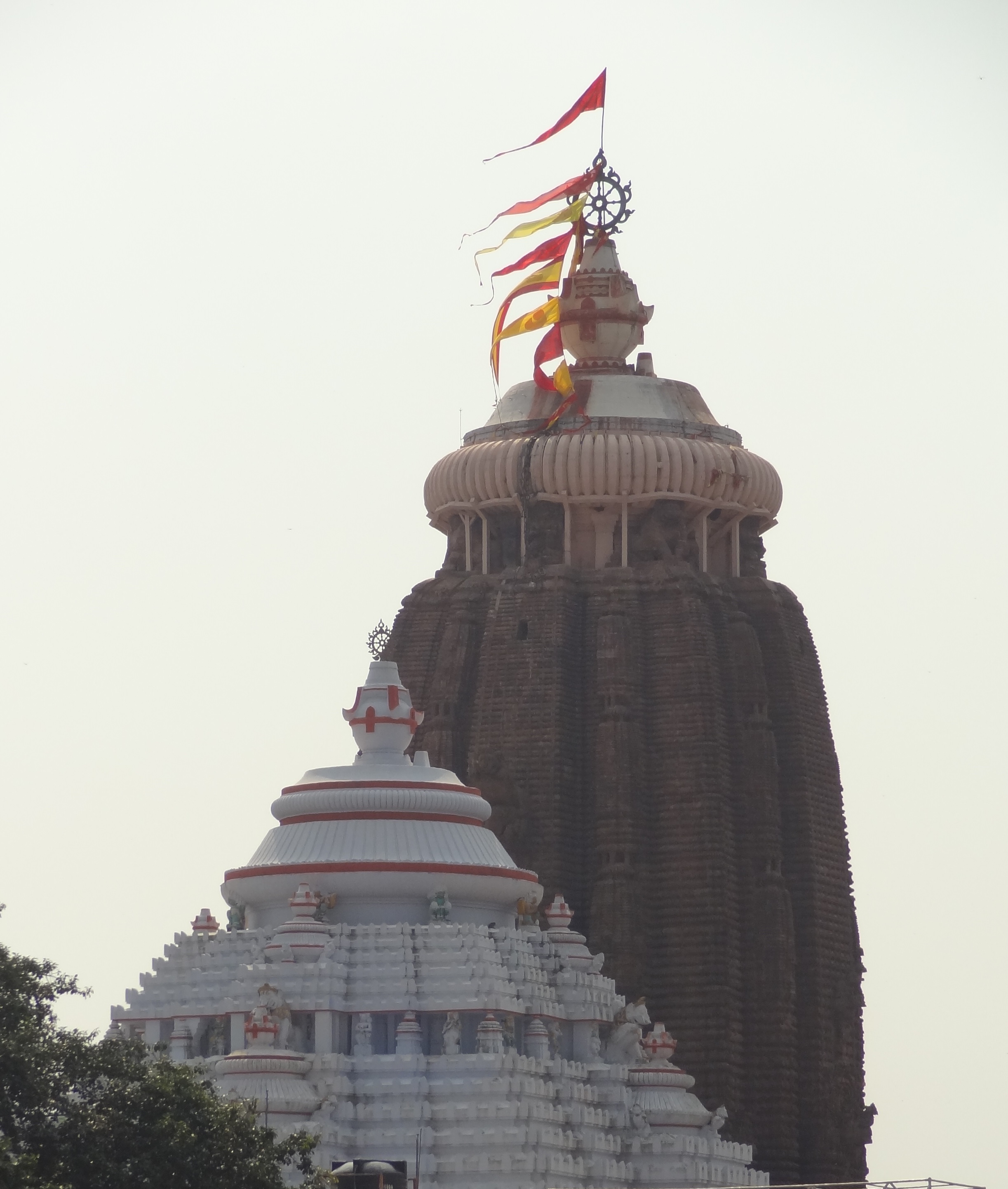|
Bhoothalingaswamy Temple (Bhoothapandi)
Bhoothalingaswamy Temple is at Boothapandi. Boothapandi is the headquarters of Thovalai taluk in Kanyakumari District, India. It is north east of Nagercoil. The village sits on the western bank of the river Pazhaiyar, at the foot of the hill known as Thadakaimalai which is considered to be the abode of Thadakai in the Ramayana. It forms a place of legendary importance. The Travancore Manual says that Bhoothapandi is an ancient place founded by one of the pandya sovereigns and vague traditions are preserved in the Keralopatti and Kerala Mahamiyam wherein the Pandiya invasion of Keral if referred to in a mythical form. The Mahatmiyam says that the Pandyas invaded Kerala with an army of Bhuthatans (spirits) and they were defeated by Parasurama, the warrior sage. The boundary of Kerala and Pandya kingdoms was fixed at Bhoothapandy as a compromise. A later interpretation brought to bear upon the Parasurama legend is that it is an allegoric representation of the advent of the Aryans i ... [...More Info...] [...Related Items...] OR: [Wikipedia] [Google] [Baidu] |
Boothapandi
Boothapandi is a panchayat town in Kanyakumari district in the state of Tamil Nadu, India. The town spans an area of around 5 km2 with Thittuvilai, Thuvarancaud, Arasankuzhi, Andithoppu, Mannadi, Saattupudoor, Seethapal and Manathittai as its sub-villages. The places situated in the vicinity of the town include Azhakiyapadiapuram to the northwest, Easanthimangalam to the southwest, and Thalakudi to the southeast and Aralvaimozhi to the east. It is the headquarters of Thovalai taluk, which is one among the four taluks of Kanyakumari district. The village has a sub-register office, taluk office, police station, higher secondary school and court. It was named after the presence of the Bhoothalingaswamy Temple (Bhoothapandi), which is famous for its sculptures and architecture. The surrounding area is green and fertile. The village is only 25 minutes from Nagercoil and its views of the Western Ghats attract many tourists and photographers. History Boothapandi was ... [...More Info...] [...Related Items...] OR: [Wikipedia] [Google] [Baidu] |
Ardhamandapa
In Hindu temple architecture, Ardhamandapa (lit. half-open hall), also spelled ''artha mandapam'' or ''ardh mandapam'', is an important element of the entrance group. It is an entrance porch forming a transitional area between the outside and a mandapa of the temple. Overview Ardhamandapa is usually an open—to provide light and air—four-pillared pavilion in front of the entrance door of mandapa of the temple. If the temple mandapa has three entrance doors, there have to be three such porches, one on each side. Ardhamandapas usually resemble mandapas in design and carving. Most Hindu, Jain, and Buddhist temples feature various transitional spaces between the central shrine (garbhagriha A ''garbhagriha'' or ''sannidhanam'' is the ''sanctum sanctorum'', the innermost sanctuary of a Hindu and Jain temples where resides the ''murti'' (idol or icon) of the primary deity of the temple. In Jainism, the main deity is known as the ''M ...) and the outside world, but only the largest ... [...More Info...] [...Related Items...] OR: [Wikipedia] [Google] [Baidu] |
Prakaram
A prakaram (प्राकारः in Sanskrit), also spelled pragaram or pragaaram) in Indian architecture is an outer part around the Hindu temple sanctum. They may be enclosed or open and are typically enclosed for the innermost prakaram. As per Hindu religious practices, devotees start to come around the outer prakarams to the inner most before entering the sanctum. Most of the historic South Indian cities like Madurai, Srirangam, Sirkali, Thiruvarur and Chidambaram were built around large temples in the center of the city. The streets of the city act as extension of the prakarams of the temple. Ramanathaswamy Temple has outer set of corridors is reputed to be the longest prakaram in the world. Temple architecture In the Hindu temple, the prakaram is the temple compound around the sanctum. Typically a Hindu temple prayer hall is generally built in front of the temple's sanctum sanctorum (garbhagriha). Usually large Hindu temples have one or more prakarams. The Prakaram ac ... [...More Info...] [...Related Items...] OR: [Wikipedia] [Google] [Baidu] |
Kamadeva
Kama ( sa, काम, ), also known as Kamadeva and Manmatha, is the Hindu god of love and desire, often portrayed alongside his consort, Rati. The Atharvaveda, Atharva Veda regards Kamadeva as the wielder of the creative power of the universe, also describing him to have been "born at first, him neither the gods nor the fathers ever equalled". He is described to be attended by the celestial nymphs of Hindu mythology, the Apsara, apsaras, depicted as a youthful deity of blue or red skin, decked with ornaments and flowers, armed with a bow of sugarcane and shooting arrows of flowers. His most popular legend is his story of incineration by Shiva's third eye while the latter was meditating, later embodied on earth as the eldest son of Krishna and his chief consort Rukmini, Pradyumna. Etymology and other names The name ''Kama-deva'' () can be translated as 'god of love'. ''Deva'' means heavenly or divine, and refers to a deity in Hinduism. ''Kama'' () means "desire" or "longing", ... [...More Info...] [...Related Items...] OR: [Wikipedia] [Google] [Baidu] |
Saliya
Saliyar or Saliya or Chaliyan or Sali or Sale is an Indian caste. Their traditional occupation was that of weaving and they are found mostly in the regions of northern Kerala, southern coastal Karnataka, Andhra Pradesh and Tamil Nadu. Caste names The oldest names for weavers in Kannada and Telugu regions were Saliga (or its variants, Sale, Sali, Saliya etc.) or Jeda (or its variants Jada, Jandra etc.). However, the present day names like Devanga and Padmasali. The original names simply meant weaver (spider). While ''Saliga'' is tadbhava of jalikha, spider or weaver in Sanskrit, ''Jeda'' is a Kannada word for spider. According to Ramaswamy, as part of the Virasaiva movement weavers initially championed caste negation or anti-casteism initially. However, as time passed even that movement became caste-ridden and various communities started claiming ritual superiority vis-a-vis other communities part of the same religion and also against non-Virasaiva communities like Brahmins. ... [...More Info...] [...Related Items...] OR: [Wikipedia] [Google] [Baidu] |
Vimana (architectural Feature)
''Vimana'' is the structure over the ''garbhagriha'' or inner sanctum in the Hindu temples of South India and Odisha in East India. In typical temples of Odisha using the Kalinga style of architecture, the ''vimana'' is the tallest structure of the temple, as it is in the ''shikhara'' towers of temples in West and North India. By contrast, in large South Indian temples, it is typically smaller than the great gatehouses or ''gopuram'', which are the most immediately striking architectural elements in a temple complex. A ''vimana'' is usually shaped as a pyramid, consisting of several stories or '' tala''. ''Vimana'' are divided in two groups: ''jati vimanas'' that have up to four ''tala'' and ''mukhya vimana'' that have five ''tala'' and more. In North Indian temple architecture texts, the superstructure over the ''garbhagriha'' is called a ''shikhara''. However, in South Indian Hindu architecture texts, the term ''shikhara'' means a dome-shaped crowning cap above the ''vimana''. ... [...More Info...] [...Related Items...] OR: [Wikipedia] [Google] [Baidu] |
Puja (Hinduism)
''Puja'' ( sa, पूजा, pūjā, translit-std=IAST) is a worship ritual performed by Hindus, Buddhists and Jains to offer devotional homage and prayer to one or more deities, to host and honor a guest, or to spiritually celebrate an event. It may honor or celebrate the presence of special guests, or their memories after they die. The word ''pūjā'' is Sanskrit, and means reverence, honor, homage, adoration, and worship.पूजा ''Sanskrit Dictionary'', Germany (2009) Puja, the loving offering of light, flowers, and water or food to the divine, is the essential ritual of Hinduism. For the worshipper, the divine is visible in the image, and the divinity sees the worshipper. The interaction between human and deity, between |
Prakaram
A prakaram (प्राकारः in Sanskrit), also spelled pragaram or pragaaram) in Indian architecture is an outer part around the Hindu temple sanctum. They may be enclosed or open and are typically enclosed for the innermost prakaram. As per Hindu religious practices, devotees start to come around the outer prakarams to the inner most before entering the sanctum. Most of the historic South Indian cities like Madurai, Srirangam, Sirkali, Thiruvarur and Chidambaram were built around large temples in the center of the city. The streets of the city act as extension of the prakarams of the temple. Ramanathaswamy Temple has outer set of corridors is reputed to be the longest prakaram in the world. Temple architecture In the Hindu temple, the prakaram is the temple compound around the sanctum. Typically a Hindu temple prayer hall is generally built in front of the temple's sanctum sanctorum (garbhagriha). Usually large Hindu temples have one or more prakarams. The Prakaram ac ... [...More Info...] [...Related Items...] OR: [Wikipedia] [Google] [Baidu] |
Nataraja
Nataraja () also known as Adalvallaan () is a depiction of the Hindu god Shiva as the divine cosmic dancer. His dance is called Tandava.''Encyclopædia Britannica'' (2015) The pose and artwork are described in many Hindu texts such as the ''Tevaram'', ''Thiruvasagam'' in Tamil and ''Anshumadbhed agama'' and ''Uttarakamika agama'' in Sanskrit and Grantha texts, the dance murti featured in all major Hindu temples of Shaivism, and is a well-known sculptural symbol in India and popularly used as a symbol of Indian culture, in particular as one of the finest illustrations of Hindu art. He is commonly referred as Koothan(), Sabesan() and Ambalavanan () in various Tamil texts. The sculpture is symbolic of Shiva as the lord of dance and dramatic arts, with its style and proportions made according to Hindu texts on arts. Tamil Devotional texts such as Tirumurai (The twelve books of Southern Shaivism) speaks that Nataraja is the form of Shiva in which he does Creation, destruction, Pres ... [...More Info...] [...Related Items...] OR: [Wikipedia] [Google] [Baidu] |
Nandi (bull)
Nandi ( sa, नन्दि), also known as Nandikeshwara or Nandideva, is the bull vahana of the Hindu god Shiva. He is also the guardian deity of Kailash, the abode of Shiva. Almost all Shiva temples display stone-images of a seated Nandi, generally facing the main shrine. According to Saivite siddhantic tradition, he is considered as the chief guru of eight disciples of Nandinatha Sampradaya, namely, Sanaka, Sanatana, Sanandana, Sanatkumara, Tirumular, Vyagrapada, Patanjali, and Sivayoga Muni, who were sent in eight different directions, to spread the wisdom. The Cham Hindus of Vietnam believes that when they die, the Nandi will come and take their soul to the holy land of India from Vietnam. The Sanskrit word nandi ( sa, नन्दि) has the meaning of happy, joy, and satisfaction, the properties of divine guardian of Shiva- Nandi. It is recently documented, that the application of the name Nandi to the bull (Sanskrit: ''Vṛṣabha''), is in fact a development of ... [...More Info...] [...Related Items...] OR: [Wikipedia] [Google] [Baidu] |
Ganesha
Ganesha ( sa, गणेश, ), also known as Ganapati, Vinayaka, and Pillaiyar, is one of the best-known and most worshipped deities in the Hindu pantheon and is the Supreme God in Ganapatya sect. His image is found throughout India. Hindu denominations worship him regardless of affiliations. Devotion to Ganesha is widely diffused and extends to Jains and Buddhists and includes Nepal, Sri Lanka, Thailand, Indonesia (Java and Bali), Singapore, Malaysia, Philippines, and Bangladesh and in countries with large ethnic Indian populations including Fiji, Guyana, Mauritius, and Trinidad and Tobago. Although Ganesha has many attributes, he is readily identified by his elephant head. He is widely revered, more specifically, as the remover of obstacles and thought to bring good luck; the patron of arts and sciences; and the deva of intellect and wisdom. As the god of beginnings, he is honoured at the start of rites and ceremonies. Ganesha is also invoked as a patron of letters ... [...More Info...] [...Related Items...] OR: [Wikipedia] [Google] [Baidu] |
Mahamandapa
A mandapa or mantapa () is a pillared hall or pavilion for public rituals in Indian architecture, especially featured in Hindu temple architecture. Mandapas are described as "open" or "closed" depending on whether they have walls. In temples, one or more mandapas very often lie between the sanctuary and the temple entrance, on the same axis. In a large temple other mandapas may be placed to the sides, or detached within the temple compound. Temple architecture In the Hindu temple the ''mandapa'' is a porch-like structure through the (''gopuram'') (ornate gateway) and leading to the temple. It is used for religious dancing and music and is part of the basic temple compound. The prayer hall was generally built in front of the temple's ''sanctum sanctorum'' (''garbhagriha''). A large temple would have many ''mandapa''. If a temple has more than one ''mandapa'', each one is allocated for a different function and given a name to reflect its use. For example, a ''mandapa ... [...More Info...] [...Related Items...] OR: [Wikipedia] [Google] [Baidu] |





.jpg)
